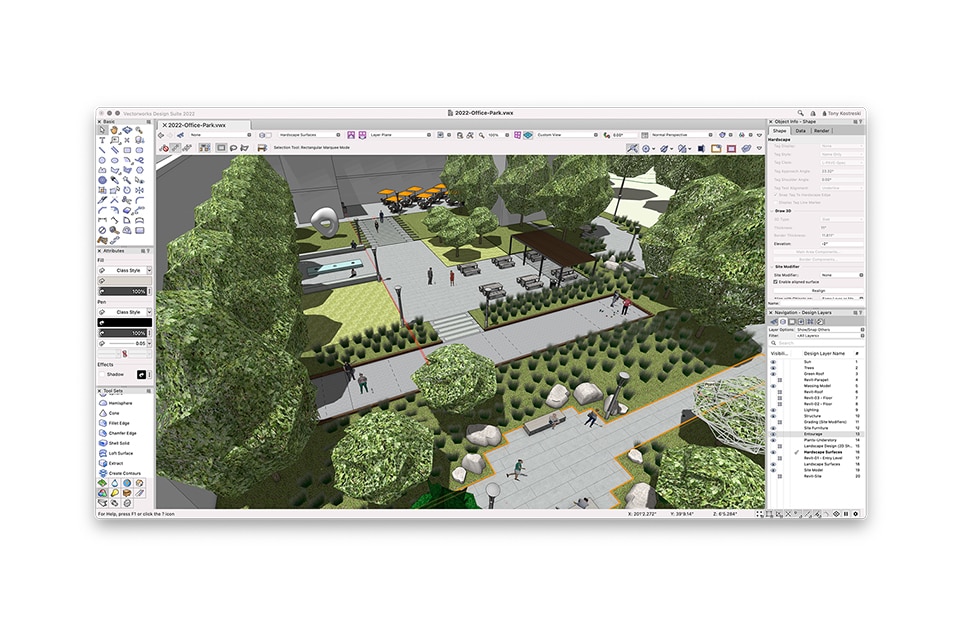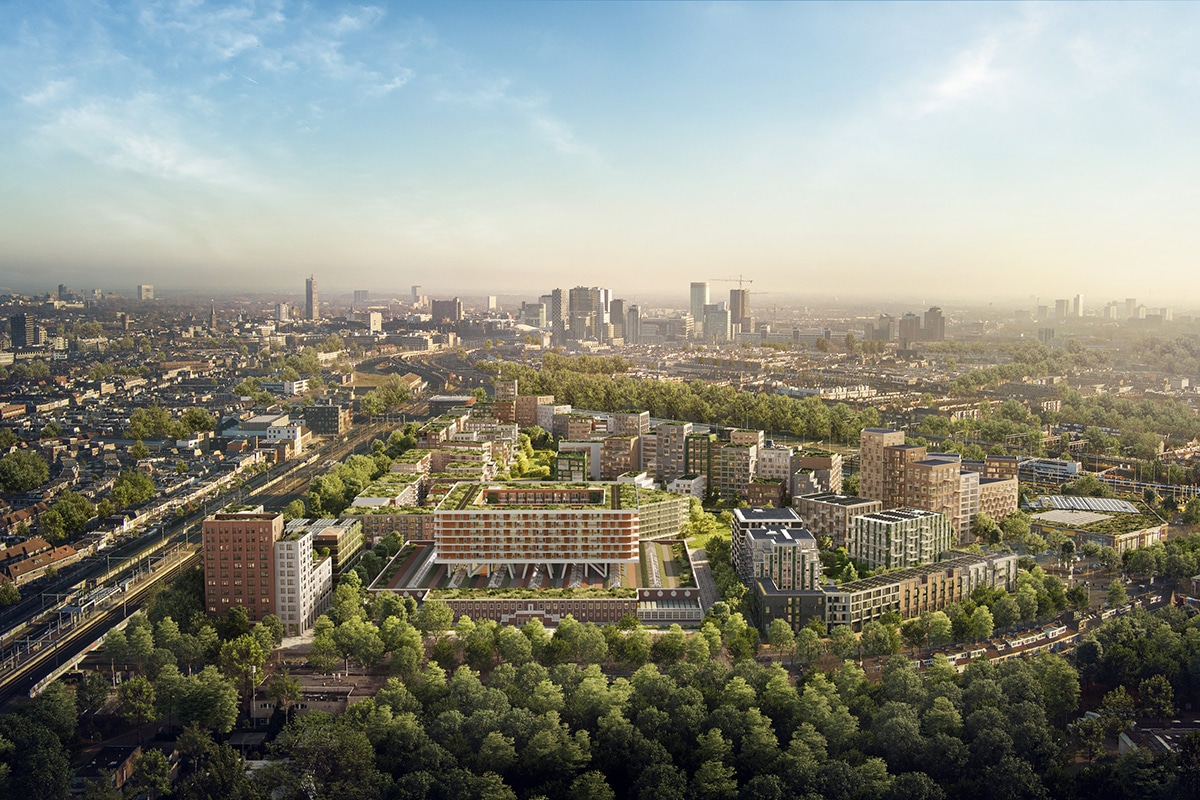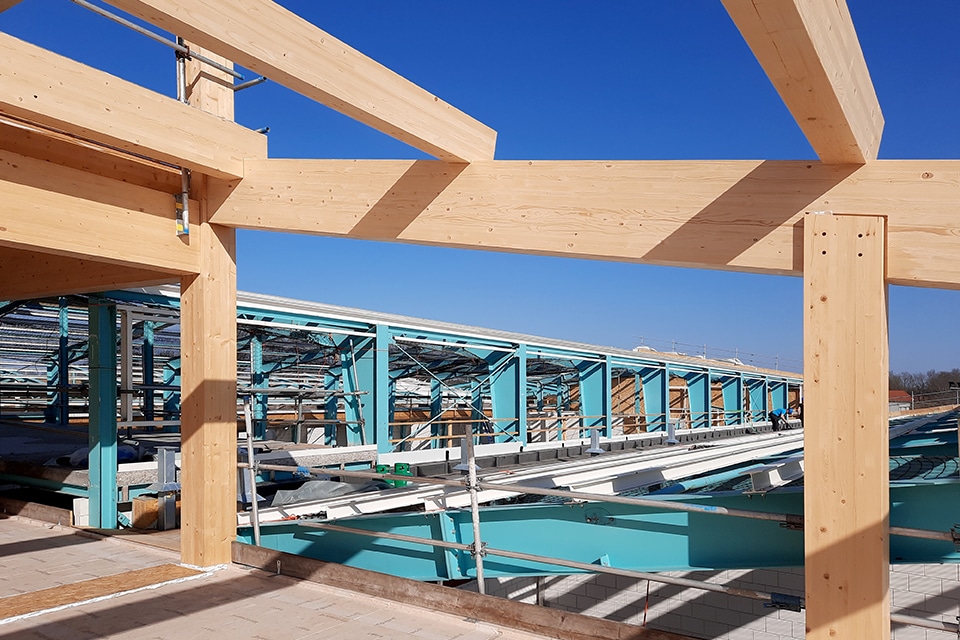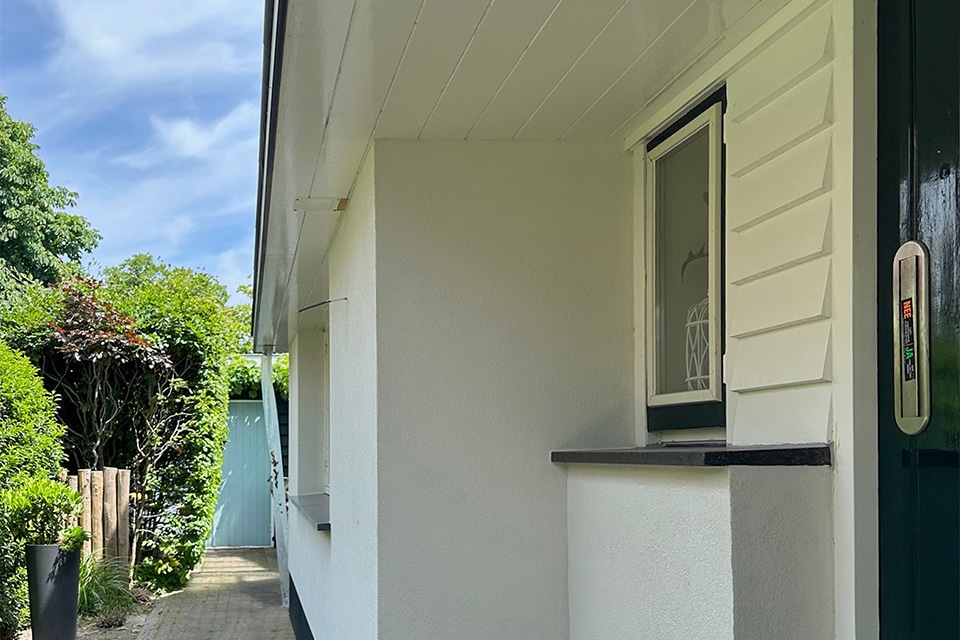
3 BIM tools for a successful BIM process in landscape architecture
A smooth BIM process requires thorough preparation and the right tools. Therefore, in Vectorworks Landscape you will find three BIM tools to get you started. We list them for you.
To set up a Building Information Model or BIM model does not happen overnight. It takes time and attention to implement BIM in your agency. With the following three tools in Vectorworks you immediately make it a lot easier.
1. The landscapezVectorworksone
This BIM tool has two main functions, namely determining ground cover and creating plant masses. In a data-driven BIM world, the Landscape Zone tool is crucial. From the beginning of your project, you can create unpaved and semi-paved areas with specific materials and their thicknesses to derive volumes. Both area and projected area are available.
Landscape zones are parametric objects whose parameters are specified in the dialog box of the Landscape Zone tool. These landscape zones can be set to automatically follow the slope of the terrain model's surface.
2. The hardening tool
The Paving tool is similar to the Landscape Zone tool in many ways, except that it handles paved surfaces such as pavement and sidewalks. Paving objects are parametric and allow you to define both the fill and curb components with materials. You can also assign overlays to the fill component.
Pavements can be set to specific heights and you can assign slope values for drainage. If you want to refine the pavement surface even further, you can use surface edit objects to set specific heights and slopes within the surface of a pavement.
3. The planting tool
You use the planting tool to represent everything from large groups of underplanting to individual trees. Planting in Vectorworks Landscape are smart objects that contain information such as their Latin name and common name, root ball shape and size, hardiness zone, water use, flowering time and color, and sunlight requirements.
Plants are also parametric objects. You can adjust parameters such as height, spread, distance, row spacing and root ball size and shape. There are several ways to place plants in your design, depending on your needs. You can place them individually, along a polyline, with specified spacing, or according to rectangular or triangular planting arrangements.
Plants in Vectorworks use image objects or have a defined 3D geometry with options to represent the root ball and planting hole. These respond to parametric changes, so you can adjust the shape to achieve the desired visual effect.
Bringing everything together with BIM
The above tools allow you to evolve your design as the project progresses. The tools contain a lot of detail and you can make coordinated adjustments as materials change. This is a lot more efficient when formatting presentations or file exchanges.
Because you design parametrically this way, the execution documentation comes directly from the model. All geometry created with these tools is automatically tagged for IFC, so you are perfectly prepared to collaborate in the BIM process.
Want to learn more about BIM processes and workflows in Vectorworks Landscape? Read more on the Design Express blog, the distributor of Vectorworks in the Netherlands.
Heeft u vragen over dit artikel, project of product?
Neem dan rechtstreeks contact op met Design Express.
 Contact opnemen
Contact opnemen



